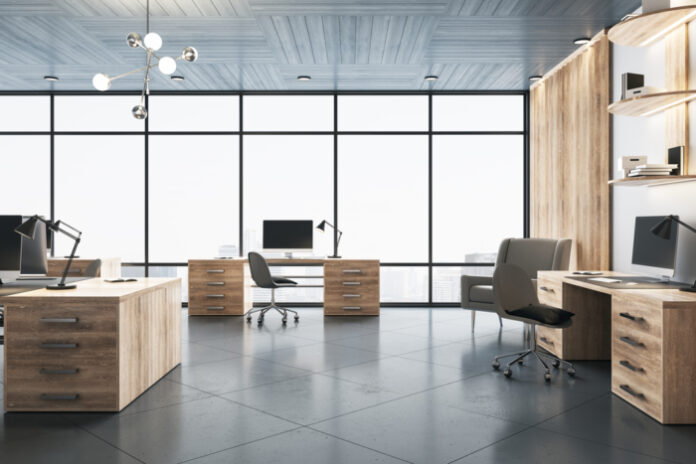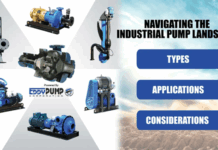Employees spend most of their work week in the office. So, the workspace should be a place where they’d be able to be productive, comfortable, and, most importantly, safe. After all, a company’s success is hinged on how its employees perform.
Ergonomics, also called human factors engineering, is concerned with how the work environment is constructed and designed so that people perform their tasks in the most optimal way possible while being safe. It also considers how humans function, accounting for their abilities and limitations, and applies this information tangibly in the work environment.
The following are some ergonomic design principles to integrate into your workspace:
1. Crossover Stairs for Accessibility
Easy accessibility is essential in the work environment because it simplifies going from point A to point B. Crossover stairs can be a game-changer as they pave the way for a non-slip route in reaching varying platform levels. Whether indoor or outdoor, hot or cold, and dry or wet, they can be set up to assist people in stepping over obstacles, hazards, and other industrial equipment. This kind of stairs is also engineered to meet the Occupational Safety and Health Administration (OSHA) standards.
2. Adjustable Workstations for Personalized Comfort
Since individuals have distinct ergonomic needs and preferences, offices must have adjustable workstations. When workers are engrossed in their work, they sometimes forget to adjust their posture, which can cause pain and fatigue.
Tables and chairs that can be adjusted in terms of height are good for workers as they reduce musculoskeletal issues and promote proper posture. Also, your arms will be parallel to the computer when it comes to desk work. A customized work setup suited for you can increase job satisfaction and productivity.
3. Proper Lighting for Visual Comfort
Sense of sight is one of the most important senses as visual comfort is apparent in realizing user satisfaction in the workplace. Good lighting leads to more improved performance regarding efficiency and making fewer mistakes. Inadequate lighting, on the other hand, can strain the eyes, which can lead to decreased productivity. When visual discomfort is addressed, the workplace becomes vibrant.
Visual comfort can be attributed to brightness, contrast, and glare prevention. Having suitable lighting fixtures that minimize shadow and ensure uniform illumination across the workspace would enhance visibility and improve efficiency.

4. Noise Reduction Strategies for Focus
Noise pollution can have a drastic effect on the overall performance and well-being of workers, whether it’s the mundane everyday work sound in the office, the notifications of gadgets, or merely the chatter of people. Employers should create a peaceful environment that removes distractions and fosters collaboration.
Incorporating soundproof materials can minimize external noise and cultivate a quieter work environment. Implement sound-absorbing materials, partition screens, or designated quiet zones to mitigate excessive noise. Also, placing carpets and acoustic panels helps reduce echo. Not only that, but workplaces can select an area that’s noise-free where workers can go if they need absolute focus or want to isolate.
5. Adequate Ventilation for Air Quality
Employees spend long hours inside their workspaces, and how clean or dirty the air circulating can impact them. Ventilation, which is the air movement inside a building, should be effective such that the circulation of air removes the stale air present.
Installing heating, ventilation, and air conditioning (HVAC) systems can aid in minimizing pollution and enhancing the well-being of employees. At the same time, opening doors, vents, and windows will help in facilitating fresh air.
6. Emergency Exit Accessibility
An emergency exit could spell life and death in case of accidents, so this shouldn’t be an afterthought. In fact, this should be accessible to everyone, especially those with special needs. It should be free of obstructions and easy to navigate. It should also be clear enough, having a marked emergency exit with an illuminating sign.
All personnel must also conduct regular evacuation drills so everyone knows what to do during an emergency. Being proactive in this aspect is significant to ensure safety.
7. Organized Cable Management
Have you ever seen a hallway wherein the cables are tangled and uncoordinated? Such is an example of a safety hazard. Cable trays and clips are helpful in keeping wires out of the way. This reduces the chances of tripping while contributing to a neat and professional-looking workspace.
Conclusion
Applying proper ergonomic principles in the workplace is an investment employers shouldn’t skimp on because it’s essential for creating a vibrant and thriving work environment. You’ll be on the right track to having a safe space by considering the examples mentioned above.
Find a Home-Based Business to Start-Up >>> Hundreds of Business Listings.
















































